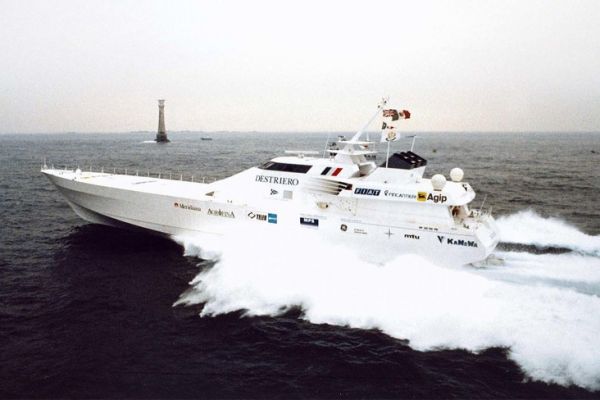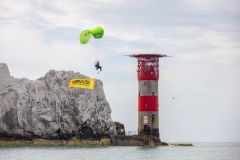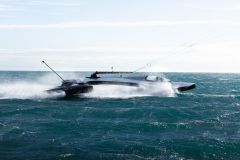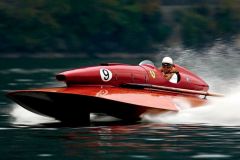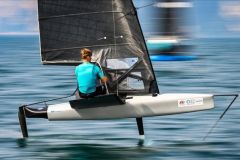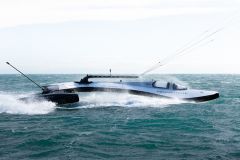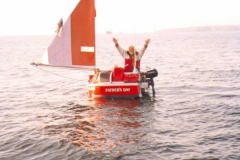The challenge was met in August 1992. On the 6th, Destriero left New York and headed for the Isles of Scilly, reaching Bishop Rock lighthouse on the night of the 9th. In just under 59 hours, she covered more than 3,100 nautical miles at an average speed of 53.09 knots, or around 98 kilometers per hour. This record remains unsurpassed to this day. The crew was awarded the Virgin Atlantic Challenge Trophy and the Columbus Atlantic Trophy major awards for an extraordinary technical and seafaring feat.
Built for pure performance
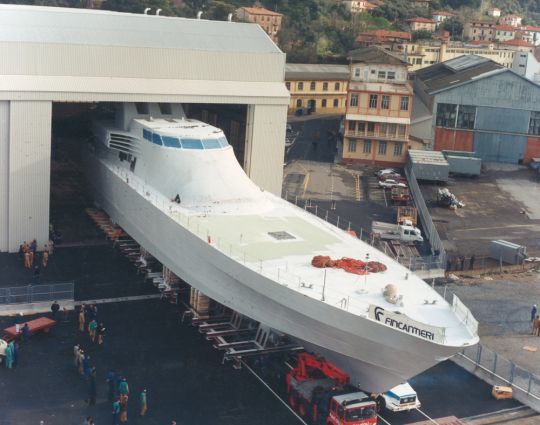
Behind this crossing lies exceptional naval architecture. Measuring 67.7 meters long and 13 meters wide, the yacht was built entirely in aluminum, making it at the time the largest light-alloy monohull ever produced by Fincantieri. Donald L. Blount & Associates, specialists in fast hulls, designed the plans, while Pininfarina worked on the superstructure.
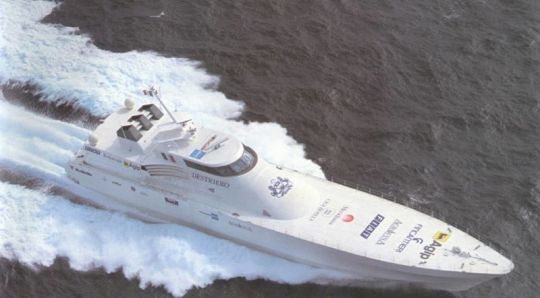
Three General Electric LM1600 gas turbines, each developing 20,000 horsepower, were installed to power this extraordinary unit. They are coupled to latest-generation KaMeWa waterjets. Together, they deliver a total of 60,000 horsepower, enabling speeds in excess of 65 knots in moderate conditions. Autonomy exceeds 3,000 nautical miles non-stop, enough for a direct transatlantic crossing without logistical support.
High-precision mechanics
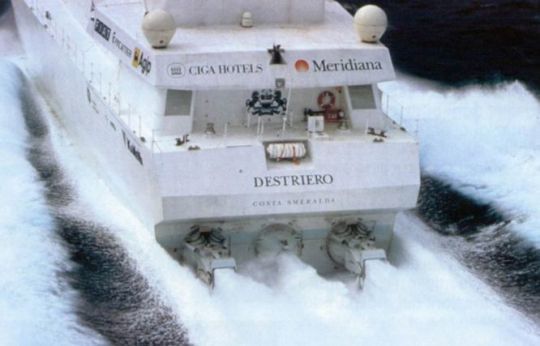
Destriero was not designed for luxury cruising, but for technical challenge and extreme speed. Its seaworthiness remains exemplary, even in rough seas. It is capable of maintaining speeds of over 30 knots in seas of force 5 to 6, i.e. with waves in excess of 4 meters. During its record-breaking run, it covered up to 1,402 miles in 24 hours, maintaining an average speed of 58.4 knots, underlining the efficiency of its deep-V hull and the stability of its propulsion.

Particular attention has been paid to noise and vibrations on board. Despite its gas turbines, the interior offers remarkable acoustic comfort. The massive use of digital cutting and composite materials for structural insulation testifies to a constant quest for performance without compromising reliability.
Non-standard features
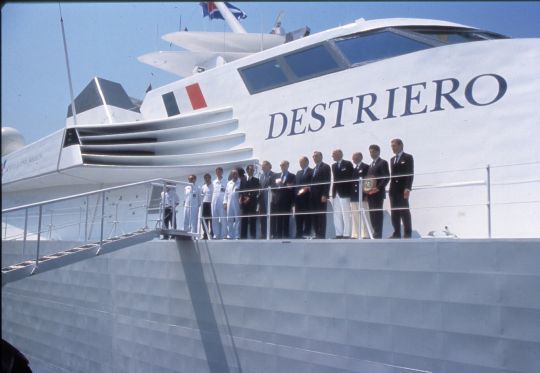
The Destriero displaces around 400 tonnes at full load, a relatively contained figure for its size thanks to its aluminum construction. Turbine propulsion, typical of military aviation, is accompanied by a centralized control system and multiple redundancies. Classified according to DNV standards for "light high-speed yachts", the vessel is approved for high-speed ocean cruising, a first on this scale in the early 1990s.
The twilight of a giant

After its record-breaking run, Destriero enjoyed a short-lived second life. She was briefly maintained, then stored in Plymouth before being transferred to the Lürssen shipyard in Bremen. In 2009, she was laid up. Neglected, the ship deteriorated rapidly, despite several aborted rehabilitation projects. In May 2024, the decision was made to demolish her. No museum or collector will have been able to offer her a new destiny.
A caption page
Thirty years on, Destriero remains an icon of a bygone era. Conceived as a manifesto of technology and speed, she remains the only yacht to have crossed the Atlantic without refuelling at an average speed of over 53 knots. Her sharp silhouette, her track record and her destiny make her a benchmark for afficionados of the genre. And if records are made to be broken, Destriero's record will stand for a long time to come, as there are no plans to set a better time.

 /
/ 